It didn’t take Squid Game to teach me that childhood is the core of adulthood. That’s literal, of course, in that we physically and emotionally grow from our childhood selves. But childhood is also locked away from adulthood, separate; we can be and become anything when we’re young, and adulthood is just the process of learning that’s not true. Games are meaningless for children, forgotten moments afterward, but they mean too much to us as adults. Squid Game played on that connection, made childhood games into the most concrete, most intense moments a life could contain, but not even such seriousness could completely annihilate the absurdity of playing tug of war for your life.
Basketball has the same effect. It takes the childhood game of tag and turns it into the currency of the league. Tagging is the act of defenders moving into a space that wasn’t technically their job, won’t be for long, but is necessary to allow other defenders to recover their positioning. It’s a short burst of responsibility. Tagging is as omnipresent as dribbling -- it probably happens on almost every halfcourt possession -- but it’s a quiet force. Almost every pick and roll involves a tag, an epithet, a signature whose failure detonates the possession, sets off the bomb, or whose success is completely unnoticed.
If pick and rolls are the staple food of the NBA, rich and filling, then tagging is the Pepto Bismol. Fail to consume space and get burned. Childhood game, then, as salve and salvation.
This week in Minute Basketball: Tag
Zatzman - Tag as Poker
Anyone who’s in the NBA can make the right play on the defensive end. They’re all so exceptional at what they do, such innate basketball geniuses, that the basic knowledge of “this is what should happen” is inherent to NBA players. Sure, they make mistakes -- who wouldn’t at 100 mph when the nine (ten, including the ball) other contexts on the court are constantly shifting -- but basic conceptual mistakes are rare.
The real skill is not only in making the right play; it’s making the right play and not letting your opponent know you’re doing it. Defense is a dance -- moving your feet is important! -- on a thin line made invisible by a wide floor, like Indiana Jones waltzing to the name of God, on the verge of plummeting through solidity at any moment.
Dive too far into the paint, and you open up a wide-open corner three. Like Squid Game, you’ve lost, and it’s certain (basketball) death! Stick with your original assignment, and you open up a wide-open layup. Certain (basketball) death again! You need to do both, to pirouette back and forth, pretending to be in multiple places at once, not ever allowing the ballhandler to know where your real intent lies.
Tagging an offensive player -- seizing that brief burst of added responsibility -- is a momentary game of poker. Am I holding aces? Am I banking on an inside straight that’s never going to appear? The defensive player pretends to show his cards, and the offensive player either folds (dribbles out to find a new play), calls (believes what the defender is communicating), or raises (disbelieves the defender).
When done well, taggers can wreak havoc with proper gambles. If they’re paying perfect attention, they can fool even the smartest players by pretending not to tag, only to throw themselves into the play at the last moment.
Or the sight of mountains not just moving but jittering across the court with verve is enough to frighten any roller into a turnover. That’s one benefit of rolling with your center so that the defensive center is available as the tagger; Joel Embiid as a tagger is poker’s equivalent of holding extra aces in your sleeves, just for fun, even though you already have the better hand.
A good tag can mean an offensive player will be left on an island against a defender of the defense’s choosing, crushed by the weight of the world. Good luck scoring -- good luck even passing! -- when Rudy Gobert has you in his sights.
But offenses can use the necessity of tagging to their own advantage, to draw and quarter taggers by pulling them in different directions at once. The Golden State Warriors built an empire upon the twin foundations of Steph Curry’s shooting and a tagger not being able to contain Draymond Green on the roll. Call them the Two Horsemen of the Apocalypse riding in different directions, torturing a poor tagger caught between them.
What happens off the ball is life or death. Good defenses can use taggers to maul offenses, and good offenses can put taggers in impossible positions. To complicate matters, NBA players face several such choices on every possession, of which there are some hundred odd, on both ends, per game. Players constantly see their responsibilities expand and contract like accordions, and trying to do too much, too little, for an instant -- even letting your opponents know what your plan is too early -- results in getting shot by a giant pigtailed doll. Ball is Squid Game is life.
Folk - You’re not It
There is a small faction of NBA players who make their money by combining shooting talent along with the childish motivation of “don’t get caught”. There’s full out sprints, quick changes of direction, and jukes around obstacles - don’t get caught. If you can continue to shake loose, you can find open shots for yourself, bend the defense, and crush your enemies.
I urge you to view a game that involves the aforementioned Curry, or one of Duncan Robinson and Doug McDermott. Evin Gualberto refers to this triplet as ‘The Three D’s’. Entertain for a moment, the idea that these players are actually trying, desperately, to avoid being caught. Not even looking for a jumper, but rather, “please god, don’t touch me, I don’t want to be it”. You’ll never see it the same way again, but you might have a new appreciation for how hard they work to get away.
The tag aspect of basketball is also where casual hoopers and NBA players can identify with one another. During every pickup run that has ever involved a person who is running around the court with reckless purposefulness, there has been another person tasked with defending them. Every person tasked with this job, when the game slows down, will say: “damn, you never stop moving huh?”. It’s a certainty. And the sheer amount of NBA players who have listed these greyhounds with otherworldly shooting abilities as their toughest defensive matchup, is what makes us the same. “Stop making us run, you bastards. How dare you turn this game of skill into a track meet.” The wizened veterans of the pickup court win the halfcourt games, but they won’t touch the full court run for this very reason. Young NBA teams hunt transition, older teams dread it.
Now, let’s watch some schoolyard bullshit together, because that’s what this is.
Duncan Robinson is bent over at the waist, almost as if he’s trying to hide, before he signals with his hand to Kyle Lowry “let’s swap.” He punches into the space for an open triple. Next, Lowry with a bit of genius himself recognizes the lanes in transition, switches his own to create a 2-on-1 and finds Robinson who deftly avoids Mills’ tag and splashes the open triple. The third, he pushes off Suggs’ (you’re IT!) and attempts to hide behind a fire hydrant (PJ Tucker) and when Suggs attempts to cheat to his destination, he reroutes. Kid stuff, you know.
This movement from McDermott is tag. It would be silly to call it anything else. Jakob Poeltl is the teacher who is on duty for recess, and McDermott has used him as a pawn in his attempt to skirt Connaughton. 5 changes of direction in a couple seconds, I can’t imagine how defeating it must be to be told that this guy is your assignment.
And for the record, this is McDermott’s game. This is how he carved himself into an NBA player, and a good one. Insatiable movement drives his importance to the Spurs, shooting talent is obviously very important, but it’s all apart of McDermott’s 50/45/100 splits (66%TS). That, and clever set design, which you can learn about here.
Robinson was reaching out to media members looking for work, he had an active LinkedIn account! He thought he was done playing basketball for a career, and then shooting talent and the game of tag carved a path for him. He just signed a $90M contract.
The wide receivers who run every route with conviction even if they’re not the target, the strikers who make deep runs to keep the center backs on their toes, and the NBA players who never stop running. Winning by the smallest margins. Winning at tag every now and then.



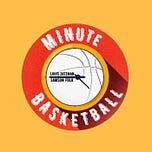



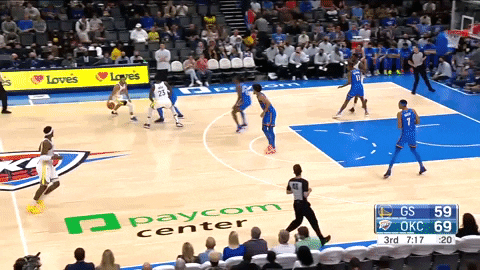

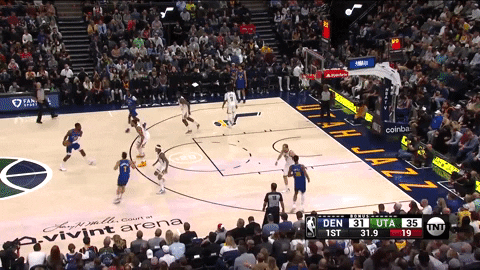
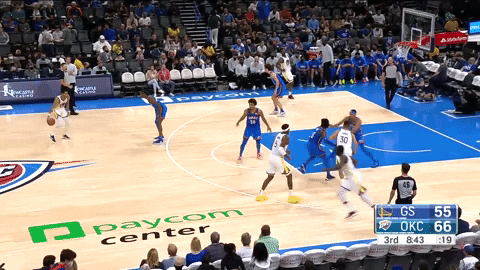

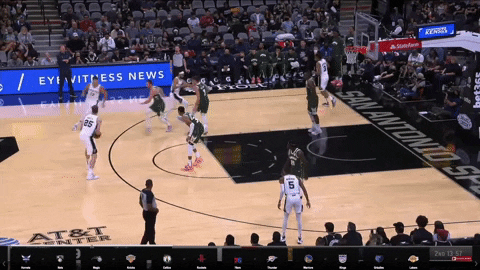









Share this post